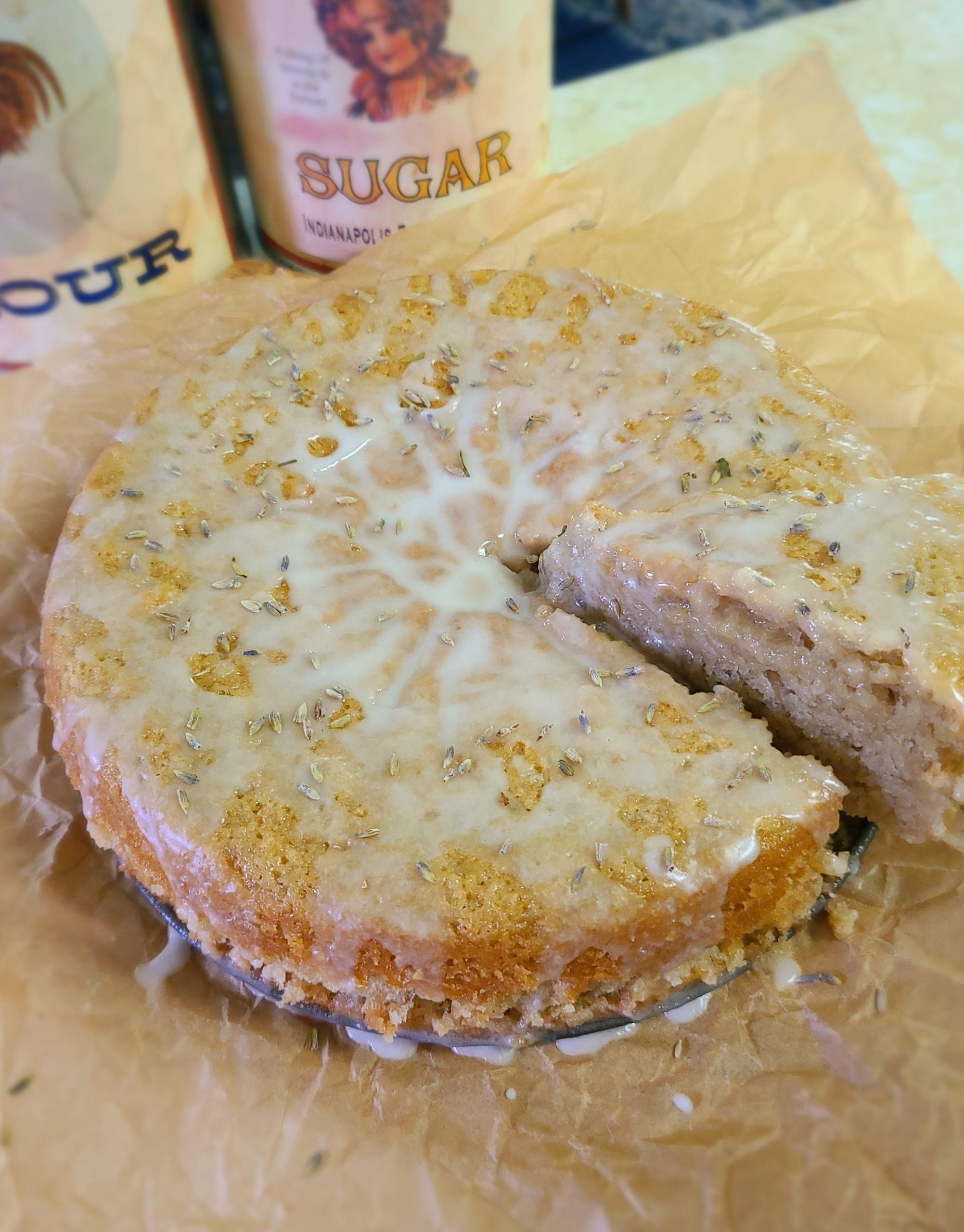The Frugality of Fats

“Fat gives things flavor!” – Julia Child

The Story of Shortening
Fats have come a long way from their primitive beginnings, approx. 25,000 B.C., of rendered animal fats aka lard to the abundance of cooking oils we have today. So let us start somewhere in the middle. Around the mid-1800’s a pair of men one a soap maker the other a candle maker found themselves married to sisters. Joining forces in 1837 formed Procter & Gamble. They entered the food-making business in 1911 with a now widely known product called Crisco. This product is still available nationwide. The knowledge and crackdown on Transfats in the 1990s forced the company to rework the product to reduce the transfats to make it more compliant with the new laws put in place.
Other sources can be traced back even further such as the Japanese & Chinese using soy oil around 2000 BCE. Olive oil can be traced back to 4000 BC and the Romans were responsible for ramping up production and distribution around 200 BCE. South Americans were using sunflower seeds and peanuts mashed and put into soups and stews. While in Africa they were grating coconuts and beating palm kernels. All used various methods in which to extract the oil and utilize it for flavoring and cooking their meals.
Regardless of the oil used or method of extraction as long as there have been humans we have used oils and fats to flavor our food. In every ethnic cuisine, we can see how they used fats and oils from Animals, Vegetables, Fruits, Seeds, and Nuts in every dish they made. And today we continue to use them or limit them depending on our health condition or goals. But as we will learn some fats are healthier than others and some will store longer than others.

The Many Forms of Fat
Now the many forms of fat are endless but for all intents and purposes, we’ll be talking about the ones that are great for food storage. Olive oil, Coconut oil, Cooking Oil Spray, and Vegetable Shortening. And if you’re wanting something animal-based you can learn to make your own ghee or purchase powdered butter from Emergency Essentials.
Each type of fat will have different pros and cons and shelf life. You’ll have to weigh each and decide which ones will fit in best for your family. Olive oil is very versatile, being able to be used to cook, make salad dressing, and for making herbal remedies. You can also use it in a pinch for emergency lighting and candles. Though I don’t know how to do that yet. I’ll have to do an update when I try that. So until then proceed with caution and do plenty of research before you try that one at home. This is my disclaimer.
Coconut oil is great with its anti-viral, antimicrobial, and antibacterial properties which make it great for home healing applications. It also is great for cooking, frying, and baking as it can be used as a butter or shortening replacement. And has been shown to help speed up metabolism, clear acne, and is great for hair and nails. Some doctors say that coconut oil can improve the immune system’s anti-inflammatory response, which helps us fight off disease.
Shortening is probably the most cost-effective of the fats and though by no means healthy or healthier than the above mentioned it has many uses. When push comes to shove some things are better than nothing at all. And in terms of cost and shelf life, this one is hard to beat. And in a survival situation, you’re going to want something to make the monotony of boring meals at least taste palatable for your family.

What is Grease Good For?
So we know some history of fats and the types we might want to store. In this section, we’re going to talk more about what we can utilize them for. In our household, we use “Coconut Oil” mainly for frying, baking, and beauty applications. But the sky is the limit with this tasty fat here are a few to check out.
“29 Clever Uses for Coconut Oil”
When it comes to “Olive Oil” we tend to use it mainly for general cooking, making dressings or marinades, and one random home remedy. I make an earache oil from this and some freshly grated garlic. You just put your fresh grated garlic in the warm oil and let sit a while and then strain and put in an old dropper bottle and store in the fridge for up to a few months. Just warm the contents by running the bottle under hot water and putting a few drops in the ear. I get earaches from the wind and cold as I’m originally from a warm, dry, and zero air current area. And this works wonders for me.
“12 Clever Uses for Olive Oil”
“10 Household Uses for Olive Oil”
Butter and Cooking Sprays are pretty self-explanatory and we know their uses. But shortening aka Crisco is a bit of a Jack of all trades, aside from its use in cooking, baking, and frying it can also be used to make bath soaps and candles. And a host of other nifty hacks this tub of shortening is good for.
“11 Alternative Uses for Crisco”
“13 Fabulous Ways to Use Crisco”

Lard in Your Larder!
Now that you know what other uses you can get out of your fats let’s talk about the proper storage and shelf life of these kitchen staples. Since we’re focusing on the three most shelf-stable we’ll begin with proper storage. Firstly you’ll want to purchase your bulk fats from stores that have a high turnover or sales rate in order to get the freshest product and get the maximum amount of shelf life. Check the harvest dates. Second try and steer clear of oil in plastic bottles or containers, shoot for glass if possible.
As with most long-term food storage, to get the most out of your shelf life, you’re going to want to eliminate a few things. Heat, Light, Air, and Pests are going to be what you’re looking to prevent or be proactive about. Finding a place to store your fats and oils that is cool, dry, and out of direct sunlight will be priority number one. As long as you don’t open your containers air will not be a problem. Once opened you’ll want to use them in a timely manner to prevent them from going rancid. As far as pests go, as long as the space is well enclosed and food products are regularly rotated and dates are inspected you should be good to go.
As far as shelf life, Olive oil has about 18 months to 2 yrs. Coconut oil has a 2 yr self-life but some preppers say you can get around 5+ yrs. Shortening on the other hand has a 2 yr shelf-life while some food storage enthusiasts have said they’ve gotten 10+ yrs. The wild card is Ghee which is clarified butter in proper conditions you can get between 2-3 yrs of storage shelf life. In any case, it’s important you do your research and weigh the value of each for your home storage and make an informed decision for you and your family.

Olive Oil Cake
SandraIngredients
- 3/4 cup Olive Oil
- 3 Vegan Eggs Bobs Redmill Egg Replacer
- 1 1/4 cup Coconut Milk
- 1/2 cup Lemon Juice
- 1 tsp Vanilla Extract
- 1 tsp Almond Extract
- 1 3/4 cup Granulated Sugar
- 2 1/4 cup All-purpose Flour
- 1 1/2 tsp Kosher Salt
- 1/2 tsp Baking Powder
- 1/2 tsp Baking Soda
- 1 cup Powder Sugar
- 1 tbsp Lemon Juice
- 1 tbsp Coconut Milk
- Dried Lavender Flowers For Garnish
Instructions
- Preheat your oven to 325F. In a 9-in springform pan lightly spray the sides of the pan and give a dusting of flour. Then place a circle of parchment paper at the bottom. Place this on a large baking sheet just in case of overflow or leakage from the springform pan.
- Make your vegan eggs first and let sit for one min or until thickened. In a large mixing bowl whisk your olive oil and vegan eggs together till well combined and emulsified.
- Mix in your coconut milk, lemon juice, and extracts.
- In a sifter add all your dry ingredients, sugar, flour, salt, baking powder & baking soda. Now sift and shake all this into your wet ingredients in the mixing bowl.
- Whisk all your ingredients till it forms a somewhat thin batter. Do not overmix. You'll see it swell up a little and that's okay.
- Now using a spatula transfer all this into your springform pan and make sure to scrape the sides of the bowl and get all that goodness.
- Place this in your oven and bake for 60 to 75 mins. Make sure you check it after 60 and add 5 min increments until a toothpick inserted into the middle comes out clean.
- Let this cook for about an hour in the pan before removing the ring and allowing it to cool down completely.
- Make your glaze. In a small bowl combine the powder sugar, lemon juice, and coconut milk. As soon as the cake is completely cooled, drizzle this glaze all over the top and garnish with your lavender flowers and enjoy.
Resources:
How Vegetable Oils Replaced Animal Fats in the American Diet
When did people start using edible oils for cooking food?
History Of Cooking Oil: Its Origin, Alternatives, And Much More!
Coconut Oil: Your New Best Friend
How to include oils and fats in your food storage
How to Store Cooking Oil for the Long-Term
About The Author
admin
Related Posts
Marvelous Macaroni & Cheese
“All middle-income families use carbs to stretch meals, across any ethnic group –…
January 24, 2022The Power of Powdered Milk
“That I may perform the oath which I have sworn unto your fathers, to…
January 14, 2022


